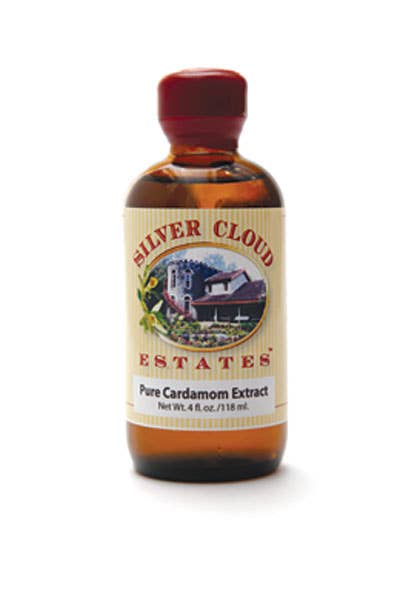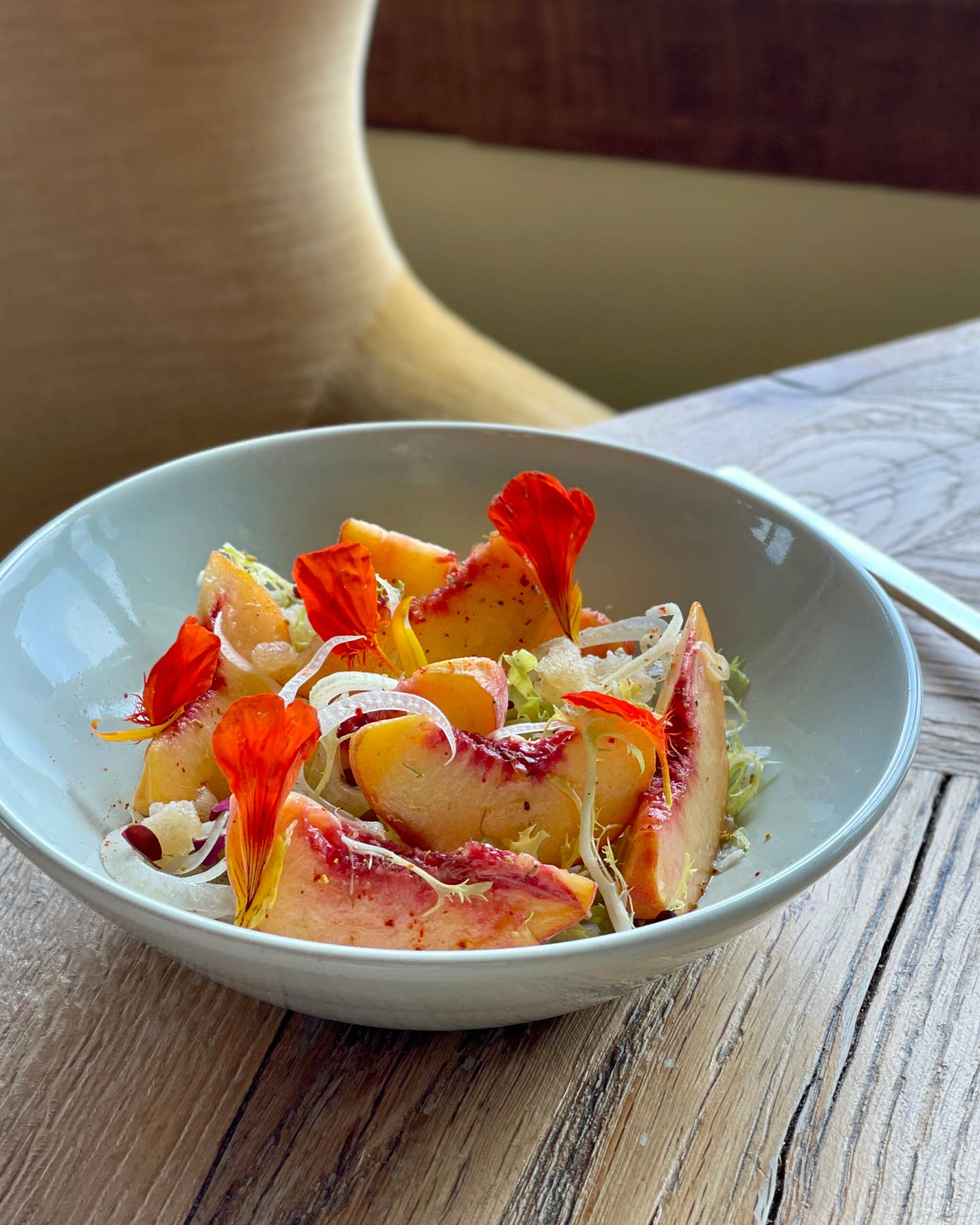
Expressions of Cardamom
From its extract to its leaves, this warming spice lends distinct flavor to all kinds of dishes.
Green and black cardamom pods are widely available in the U.S., but cardamom comes in other forms and varieties, too, with distinct characteristics and uses. The spice known as Thai cardamom (Amomum krevanh), a cousin of green and black cardamom, is harvested throughout Southeast Asia. Known as luk krawan in Thailand, the chickpea-size pods exude a floral, menthol-like aroma. Simmered whole with coconut milk, peanuts, bay leaves, potatoes, and other spices, they are a key flavoring in the southern Thai massaman curry; Thai cardamom is also used to flavor the broth in many versions of pho, the Vietnamese beef noodle soup, among other Southeast Asian dishes. Cardamom extract (pictured) is employed by some cooks as a shortcut for lending a dish a pronounced cardamom flavor, or for fine-textured preparations such as icing, whipped cream, and custard that would be coarsened by crushed pods or ground seeds. Cardamom extract can also be used much like vanilla extract, in baked goods and ice creams. The leaves of the green cardamom plant, roughly eight inches long, have all sorts of culinary uses. Some cooks mince them and add them to curry pastes; others use them like bay leaves, adding them whole to stews and braising liquids to add subtle zest and sweetness. You can also wrap fish or meat in cardamom leaves before grilling or roasting. The leaves will not only provide protection from the heat of the oven or grill and help to seal in moisture; they'll also impart a subtle cardamom fragrance to whatever you're cooking.
Keep Reading
Continue to Next Story










